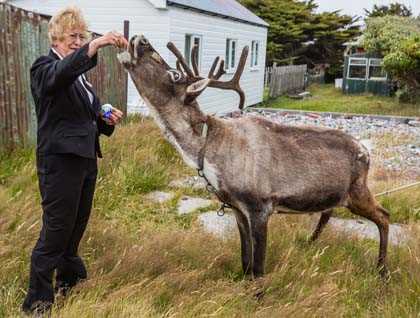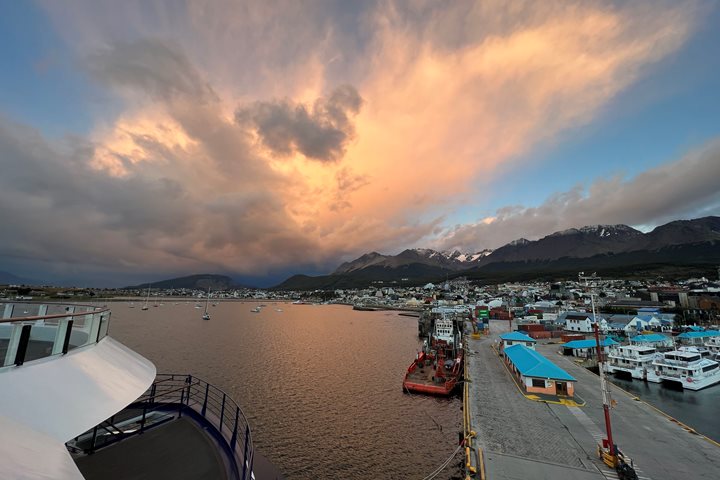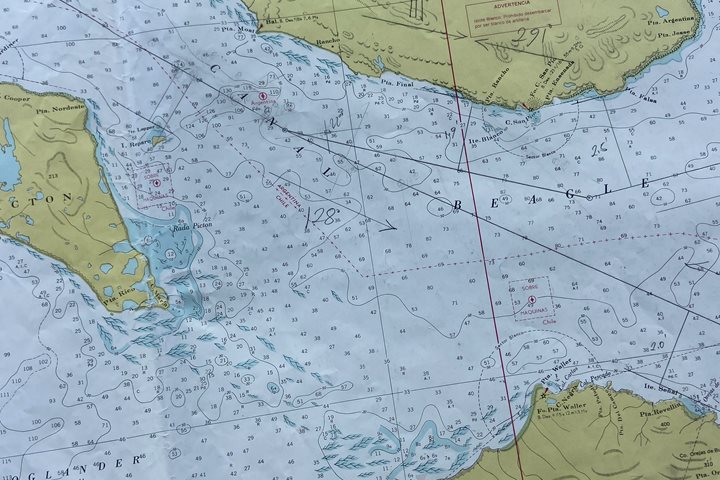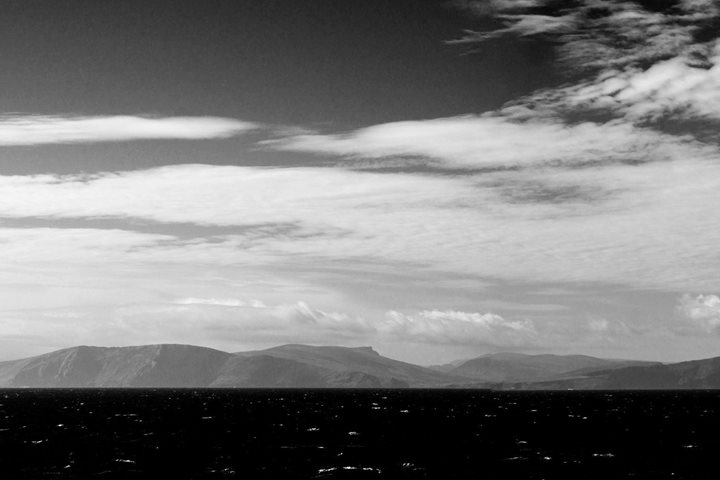Shortly after breakfast the fog and rain started to lift as the National Geographic Explorer closed the coast of East Falkland. We have been two full days plus at sea from South Georgia, taking as much as a force eight on the bow. At this point in the expedition most souls on board have grown their “sea legs” and take the motion in stride. No doubt we all enjoyed the calming of the ship as we pulled into the lee that the island offered us. After some consideration the port authority deemed the wind to have fallen enough to allow us to come alongside the floating wharf known as FIPASS and our adventures in Stanley began.
Some opted to stretch their legs and go for a long hike up Mt. William, with our local guide describing the conflict with Argentina that erupted in this area in 1982. Others chose to visit a working sheep farm of 700 head and 23,000 acres at Long Island Farm, where Neil and Glenda Watson welcomed us onto their farm and into their home to demonstrate a working life that fewer and fewer Falkland Islanders are choosing as their own these days. Many chose to visit the capital of Stanley itself, to see the Government Building, 1982 conflict memorial, as well as the nine pubs and four houses of worship that this small town of around 2,400 folks has to offer.
A definite highlight of Stanley for me personally was to have our guide Nancy Jennings introduce us to “George,” an 8 year-old reindeer brought to the Falklands from the island of South Georgia. We of course have just left South Georgia, and in fact were witness to the remains of the last of George’s kind, who this year were eradicated entirely from South Georgia. I was interested to hear that there were several other reindeer currently living here in the Falklands, and a bit of a mystery began as I was determined to get to the bottom of this reindeer question.
Stopping by at the Falklands Conservation office it turns out that the Falklands Government actually brought 54 reindeer to the islands in the early 2000’s. They were initially let loose at Soladero Farm on East Falkland, but were moved to several different farms in an attempt to find a proper habitat for them. The herd population dropped to as low as 14 individuals when they were moved to Albemarle, where they remain to this day, now fully recovered and numbering right around 100 animals. The reindeer are now under private ownership and seem to be doing just fine, thank you.
At the suggestion of the conservation office, I stopped by the sailing vessel Golden Fleece, to talk to her captain Jerome Poncet. Jerome wasn’t aboard but his son Leiv was happy to chat with me about a reindeer project his father initiated in 2002. It seems that Jerome brought 15 reindeer from Husvik on South Georgia to 40 square kilometer Beaver Island in the western part of the Falklands. The reindeer lived in specially designed pens on the sailboat, happily living for almost a month at sea before being turned loose on the island.
The following year Jerome again brought reindeer to the island, this time 16 individuals from the genetically different herd at Ocean Harbour, the last place we saw reindeer carcasses on our own expedition. From this small group of 31 reindeer the herd on Beaver Island now numbers about 200 individuals. As South Georgia is now believed to be reindeer free, it may ease the loss in knowing that the reindeer from there have found a new home right here in the Falklands. Perhaps Carl Anton Larsen and his brother Lauritz would smile at the fate of the herd that they themselves brought to South Georgia all the way from Norway beginning in 1911. The herd lives on here in the Falklands, and are still going strong in the Southern Hemisphere!







